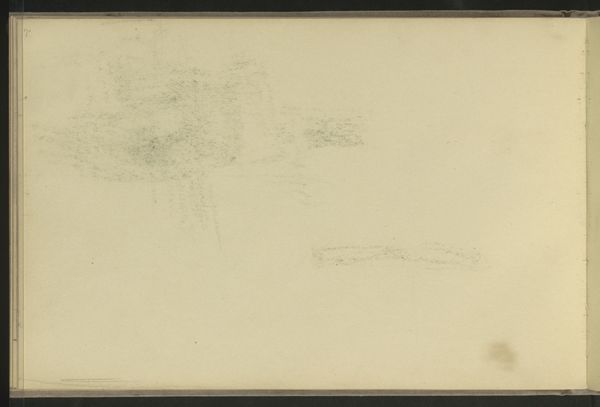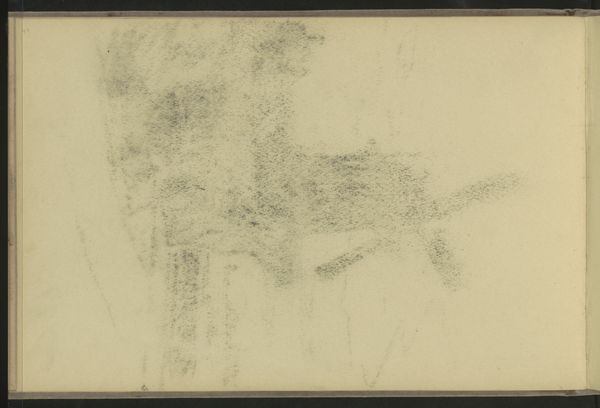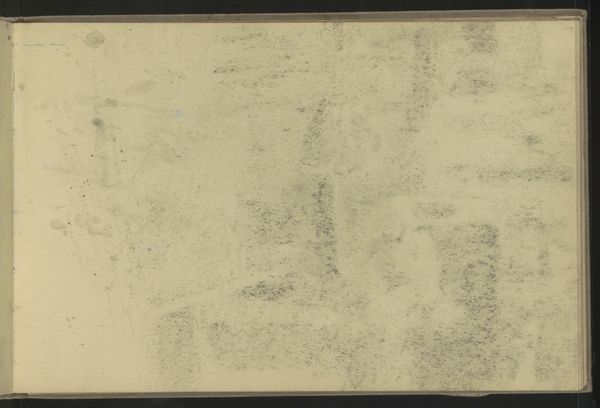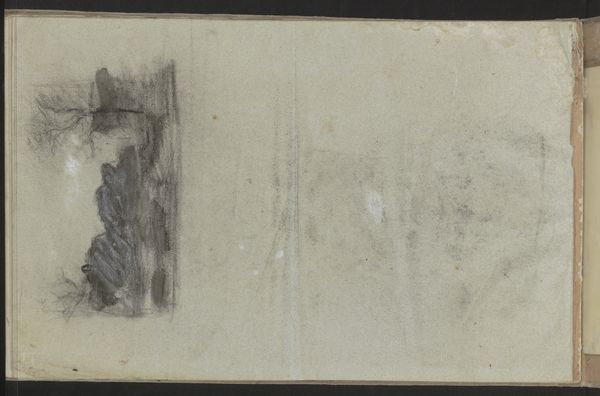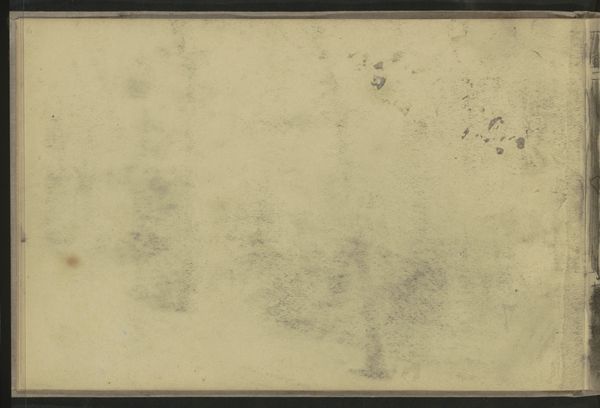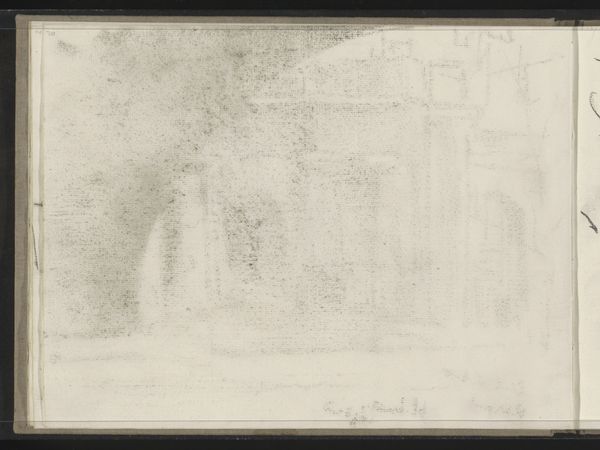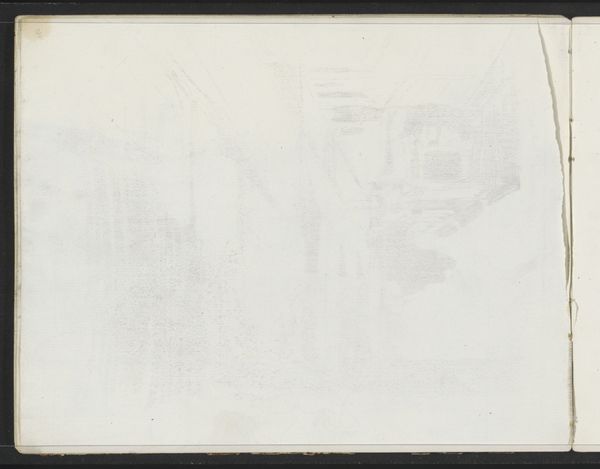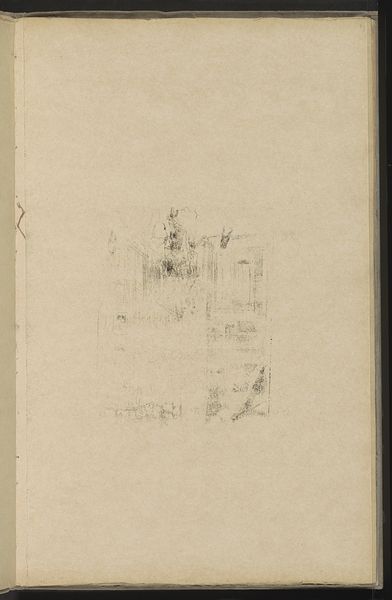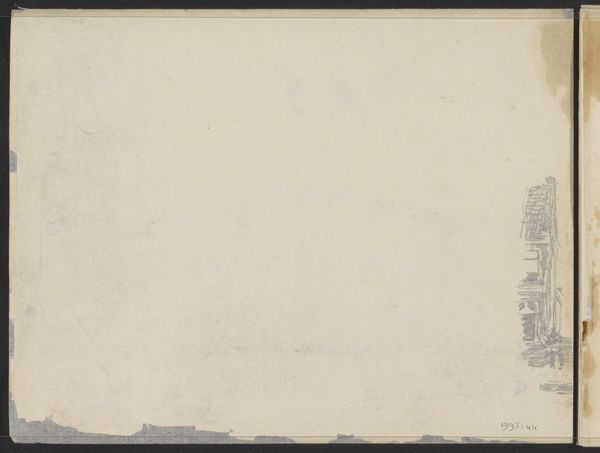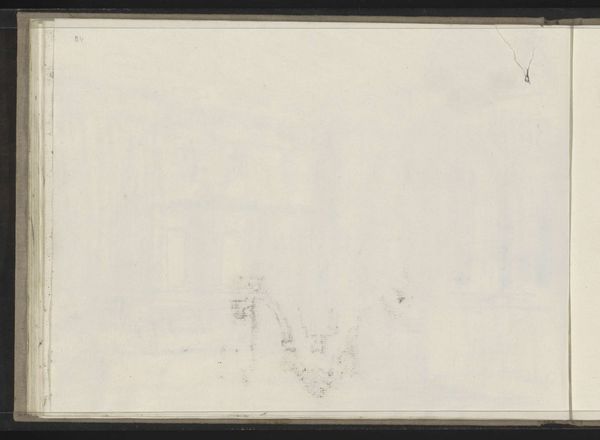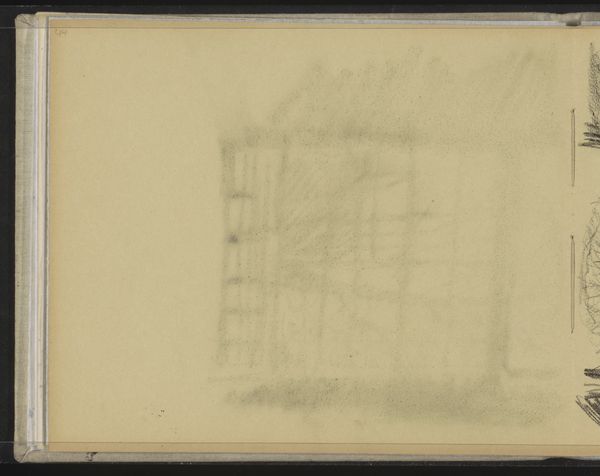
Copyright: Rijks Museum: Open Domain
Curator: Standing before us is "Abklatsch van de krijttekening op pagina 25," an intriguing work by Willem Witsen, dating from about 1901 to 1907. It's a drawing rendered in ink on paper. Editor: My first impression? A whisper. A barely-there landscape trying to hide in plain sight. It's a masterclass in understatement, like a memory fading at the edges. Curator: Exactly! The technique Witsen employs here is fascinating. The German term 'Abklatsch' refers to a print pulled from a drawing, creating this wonderfully delicate, almost ghostly effect. It almost looks like an early form of image transfer. Editor: It does invite you closer to examine the faint traces and lingering energy. And the "landscape" aspect you mention makes me think of rainy days blurred through a train window, all muted greys and softened lines. Curator: Precisely. Witsen was very involved with the Tachtigers movement, focusing on impressions and atmosphere and rendering moods in the visible world around us. You know, urban landscapes, waterways… He wanted to capture these immediate sensations. Editor: Do you think the "unfinished" nature of this kind of impressionistic sketch was embraced and accepted more by art buyers, at the turn of the century? How much was Witsen reacting to established tastes? Curator: Well, the art world was definitely shifting. While some still craved detail and academic polish, many others embraced this immediacy, the raw emotion captured in fleeting moments, it was such an exciting time. Witsen’s involvement in the art circles of his day undoubtedly provided that confidence to capture these glimpses and sketches. Editor: It's like we’re eavesdropping on a thought process. Curator: Absolutely. What might appear unfinished to some is, in reality, a deliberate choice, it's just brimming with suggestions that tickle our visual and emotional curiosity. Editor: It’s certainly making me think differently, not only about Witsen, but also about the stories behind those fragments of forgotten images, things lost on the cutting room floor. Curator: In the end, these quiet works often resonate the loudest, you know? Editor: Precisely. It’s a subtle, but powerful reminder to embrace the unfinished.
Comments
No comments
Be the first to comment and join the conversation on the ultimate creative platform.
